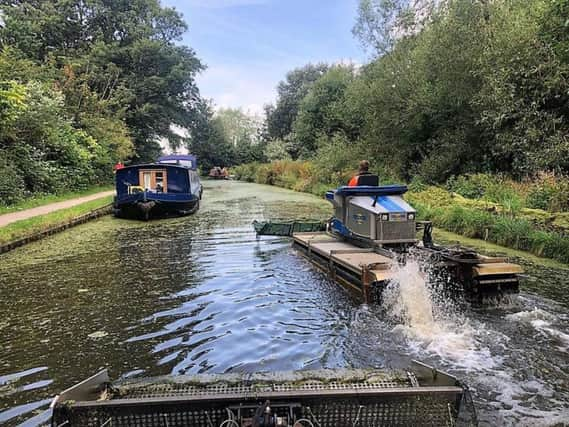Canal & River Trust removes duckweed 'carpet' from Lancaster Canal


Duckweed is the world’s smallest flowering plant, which multiplies rapidly in hot weather, and is a particular problem on a short section through north Preston. It is not harmful to humans or animals and the Trust encourages everyone to continue to enjoy the big outdoors along the Lancaster Canal, but urges people with young children or dogs to take extra care when they see the weed.
Diane Rollin, ecologist at Canal & River Trust, said: “Duckweed is a perennial problem across our 2,000 miles of waterways where there is a very low water flow. In this hot weather we’ve seen rapid growth – we clear a section, only to find that more has floated in.
Advertisement
Hide AdAdvertisement
Hide Ad“Lots of ducks, geese and some fish like to eat it but dogs and other animals have been known to mistake it for grass and have ended up in the water. We want people to continue to enjoy their visits to the canal, we just urge visitors to take extra care and take their litter home.”
Just over a mile and a half of duckweed was collected by the Trust using a specialist Truxor weed-cutting boat.
An individual piece of duckweed is no bigger than a ladybird, but congregated together, they can resemble a green lawn or pea soup across the canal. This can cause litter to accumulate on the surface, which can be problematic for the hundreds of boats and leisure craft on the water.
Significantly, if left to thrive, the weed can also cause problems for other aquatic wildlife by starving it of oxygen and sunlight.
Advertisement
Hide AdAdvertisement
Hide AdInvasive aquatic plant species such as duckweed and the non-native azolla filculoides (water fern) thrive in waterways with a low flow during the summer months when there is an increase in water temperature, pH values, light and nutrient concentrations. These species double their biomass very quickly, in some cases within a matter of hours. If left unrestricted, a biomass of duckweed covering 10 square cm can grow to cover one hectare (100 million square cm) in less than 50 days.
“As the hot weather continues over the summer, we may have to organise other weed-clearance operations, which is obviously a costly exercise for our charity. However it is important to keep on top of the problem – and the top priority is for people to continue enjoy visiting the beautiful canal,” Diane added.
For more information about visiting the Lancaster Canal, visit https://canalrivertrust.org.uk/